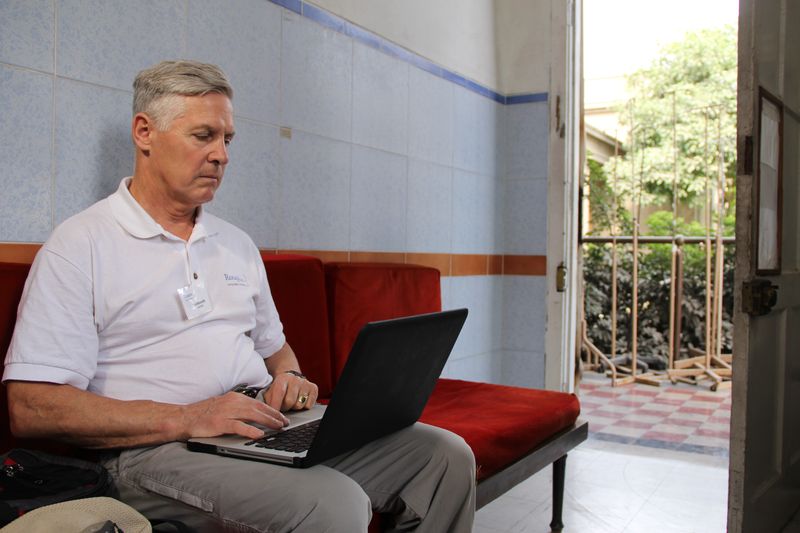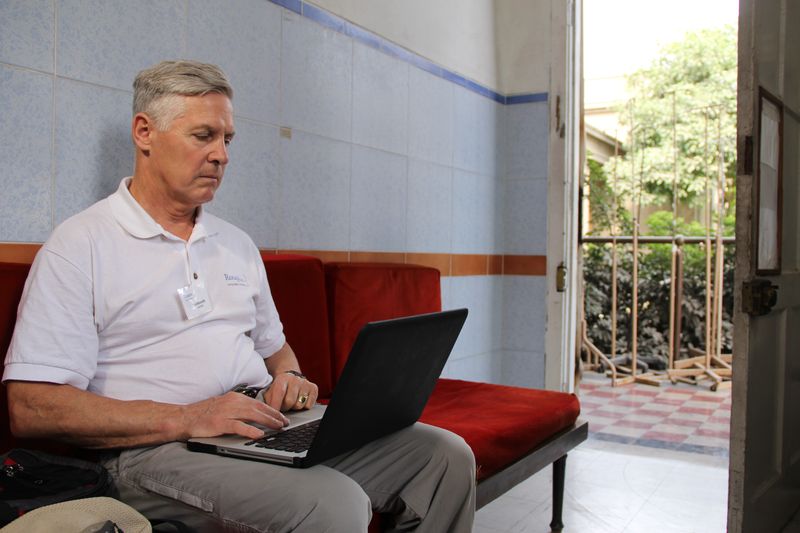
Rick and I share a room on this trip. Actually it's a Presidential Suite on the top floor so I don't want to falsify any facts or mislead anyone into thinking that we're clinging together in a hut deep down in the alley kept awake by an unruly streetside empanada vendor. This being my first trip, I was immediately notified that these circumstances are not the norm, and that our suite would also double as the hospitality room for after hours rendezvous. Rick is in charge of keeping the hospitality suite hospitable, one of the innumerable tasks set before him each day. As if he didn't have enough on his plate, he also wanted to share a few things for the blog. Here are some of his observations:
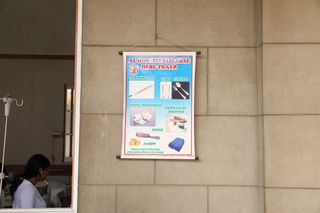 "With a public hospital in Lima like Hospital Arzobispo Loayza, the patients and their families have to bring all of their own personal supplies. This sign shows that patients have to bring their own silverware, toothbrush, soap, toilet paper, glassware, and a towel. Since so many of our cleft patients were children, either one or both of their parents were constantly in the wards. Nurses and parents worked side by side in the recovery of the kids: comforting, changing diapers, and listening to our pediatricians give instructions for the care of the children after they leave the hospital.
"With a public hospital in Lima like Hospital Arzobispo Loayza, the patients and their families have to bring all of their own personal supplies. This sign shows that patients have to bring their own silverware, toothbrush, soap, toilet paper, glassware, and a towel. Since so many of our cleft patients were children, either one or both of their parents were constantly in the wards. Nurses and parents worked side by side in the recovery of the kids: comforting, changing diapers, and listening to our pediatricians give instructions for the care of the children after they leave the hospital.
"Another interesting 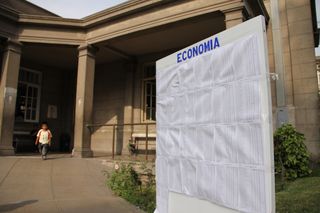 practice in this huge, public hospital in central Lima is with the billing. Many families do not have addresses where they can receive mail, so the sign [to the right] shows a posting of how much each patient owes. All day long, families would stop by and have a look at their bill payable when they take their family member home.
practice in this huge, public hospital in central Lima is with the billing. Many families do not have addresses where they can receive mail, so the sign [to the right] shows a posting of how much each patient owes. All day long, families would stop by and have a look at their bill payable when they take their family member home.
"Along with personal supplies, patients have to provide their own medicine. Since our patients are being operated on for free, and we provide all of the supplies, it is the job of the quartermaster to procure and manage these supplies. Most meds we bring with us, but controlled substances like propopal and morphine have to be purchased locally. This brings me to the principal Farmacia on the Hospital Loayza campus. It takes a team to procure the goods. 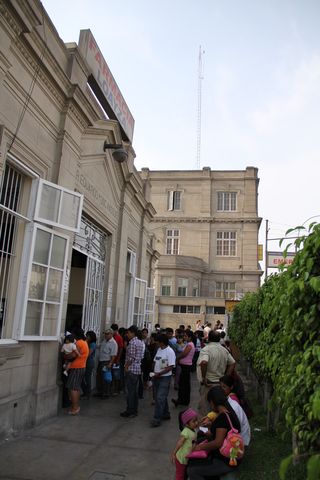 The first step is to arrange for the prescription to be written. For morphine and anesthetic drugs, the prescription must be for a specific patient; and I found out after a couple of attempts, the writing has to be just so. Changing pens on a single document will send me walking back to the doctors begging for better writing. I had my favorite Farmacia warrior Soledad, a local OR nurse, accompany me on most procurement missions. We first enter the door pushing past a line of nearly 100 people. Then Soledad moves to the front of just the right line to shove the prescription under the clerk’s nose. Second we would crowd forward in a payment line with our tracking number. Then off to the delivery line, which sometimes resulted in finding they were out of the right suture, or saline. My 1-hour process from getting the prescription, assembling my team, and marching over to the pharmacy might have to start all over. But thanks to Soledad, and my climbing up the steep learning curve, we usually succeed." – Rick Waltonsmith, Quartermaster
The first step is to arrange for the prescription to be written. For morphine and anesthetic drugs, the prescription must be for a specific patient; and I found out after a couple of attempts, the writing has to be just so. Changing pens on a single document will send me walking back to the doctors begging for better writing. I had my favorite Farmacia warrior Soledad, a local OR nurse, accompany me on most procurement missions. We first enter the door pushing past a line of nearly 100 people. Then Soledad moves to the front of just the right line to shove the prescription under the clerk’s nose. Second we would crowd forward in a payment line with our tracking number. Then off to the delivery line, which sometimes resulted in finding they were out of the right suture, or saline. My 1-hour process from getting the prescription, assembling my team, and marching over to the pharmacy might have to start all over. But thanks to Soledad, and my climbing up the steep learning curve, we usually succeed." – Rick Waltonsmith, Quartermaster




